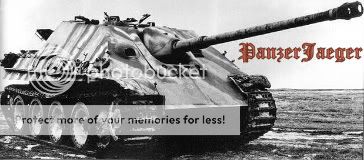The more I learn about the way it was used and about its numerous defects the more I am convinced the project called Panzer VI (Tiger) was a failure.
Of course I know it a very good tank, but let me present why I think the entire project contributed to the earlier end of the war.
1. The tank was simply too heavy - in Europe the continent with so many rivers only a small number of bridges could be used by these armoured vehicles.
Its weight seriously limited its use everywhere and made it almost impossible in Eastern Europe during autumn and spring - exactly the place were it was so important.
2. Engine - devoured too much fuel, was plagued by numerous defects which meant the tanks spent a lot of time in repair workshops.
Also it provided a useful weak spot for enemy (even Molotov cocktails could all to easily destroy the tank).
3. Vulnerable to mines - it is incredible, but Germans completelly underestimated this danger - sure it is hard to destroy such tank using this weapon, but every explosion of a mine meant more days in repair.
4. No evacuation equipment - a damaged Tiger was a nightmare to the entire unit. It required THREE tractors to move it - one less and good by Tiger, one is damaged and start again, not to mention how complicated it was. Often a fellow Tiger had to drag a damaged Pz VI with pretty large possibility it would be damaged as well ( obviously engine didn't tolerate over 100 tonnes...) - anyway it meant that 1 damaged Tiger meant 2 Tigers eliminated in one go...
5. Brainless commanders - Tigers were wasted in stupid missions so often that it seems almost suicidal... Even the very first use of Tiger at Leningrad in late 1942 was almost a joke on its own - narrow road, mud ( i.e. swamp-like trap for Tiger) on both sides and heavy artillery ahead = no results except several damaged Tigers.
6. Too expensive - simply all things considering, keeping in mind all the points above the time and resources spent on Tigers was a waste and it was a very costly waste of resources the Third Reich couldn't afford.
Your opinions ?








 Reply With Quote
Reply With Quote
 In the hands of a good commander, such as Michael Wittman at Villers-Bocage, you can see that it is indeed a very lethal weapon.
In the hands of a good commander, such as Michael Wittman at Villers-Bocage, you can see that it is indeed a very lethal weapon. 






 - for "On this day in History"
- for "On this day in History"























Bookmarks